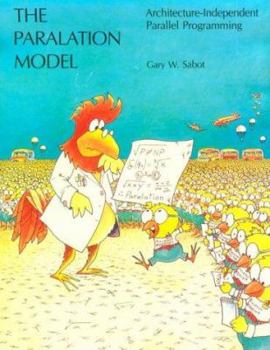The Paralation Model (Artificial Intelligences Series)
The Paralation Model introduces a way of programming parallel computers that is easy to use for general problem solving, and will work for many different parallel computer architectures with any number of processors, from one to billions. The book includes working LISP source code for a mini compiler, along with many programming examples. Parallel computers can often be impossibly hard to program. The paralation model that Gary Sabot describes is a breakthrough in its simplicity and well defined semantics and can serve as a useful and stable semantic staging point for parallel language research. Consisting of a new data structure and a small, irreducible set of operators, the model has a number of useful features: it can be combined with any base language to produce a concrete parallel language; it makes explicit and transparent the cost of both processing and communication, often ignored by shared memory and data flow models; and it serves as a precise tool for a programmer while simultaneously supplying a compiler with an abundance of useful information for a variety of target architectures. This decouples advances and changes in parallel computer design from the design of application programs: old paralation programs can take advantage of new computers without sacrificing efficiency. Gary Sabot is a research scientist in the advanced architecture group of Thinking Machines Corporation where he is helping to design future generations of parallel supercomputers. The Paralation Model is included in the Artificial Intelligence series, edited by Patrick Winston, Michael Brady, and Daniel Bobrow.
Format:Hardcover
Language:English
ISBN:0262192772
ISBN13:9780262192774
Release Date:January 1988
Publisher:MIT Press (MA)
Length:238 Pages
Weight:1.45 lbs.
Dimensions:0.8" x 7.3" x 9.4"
Customer Reviews
0 rating





